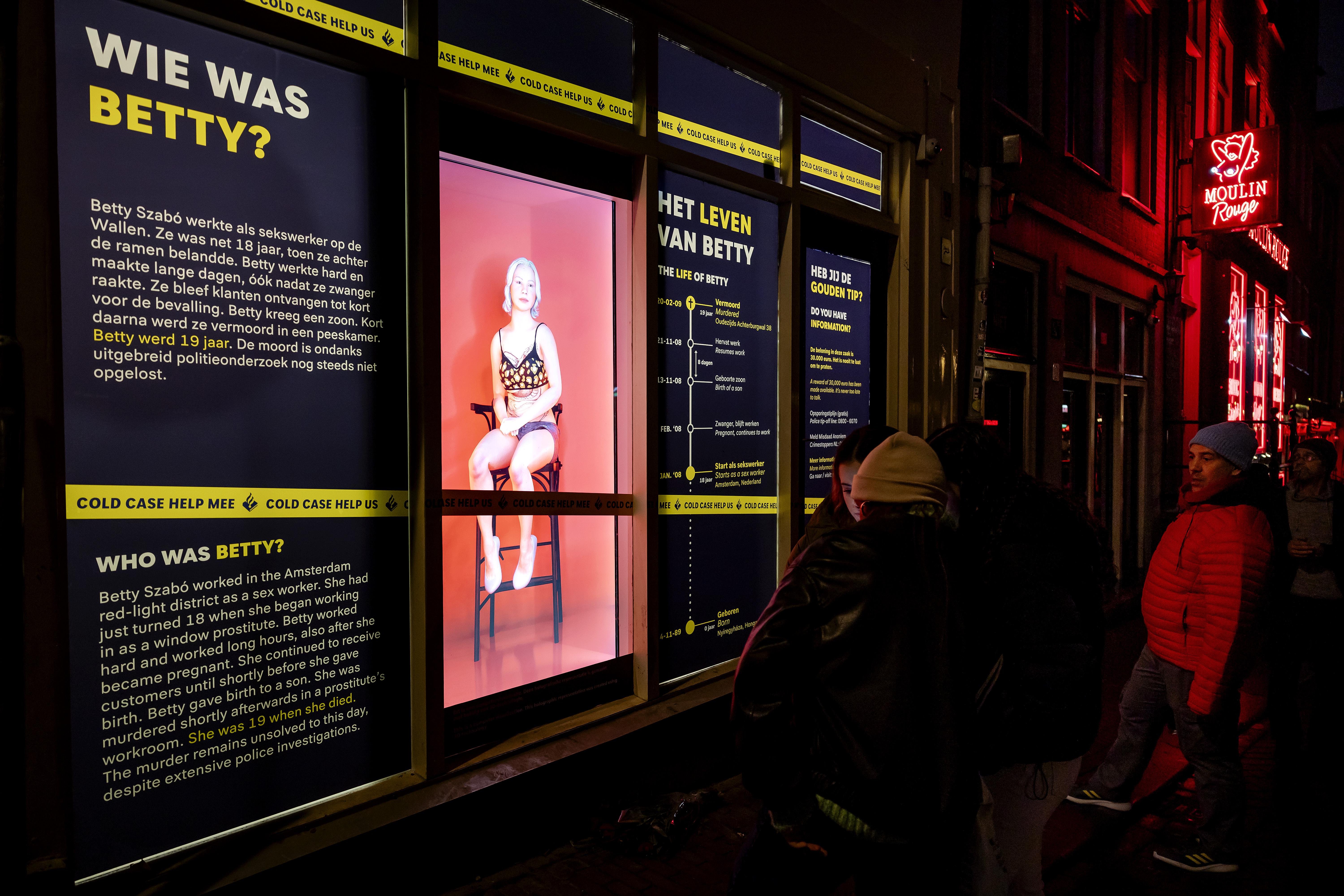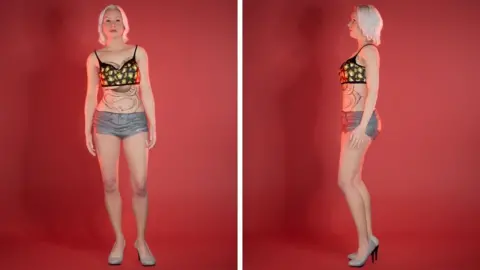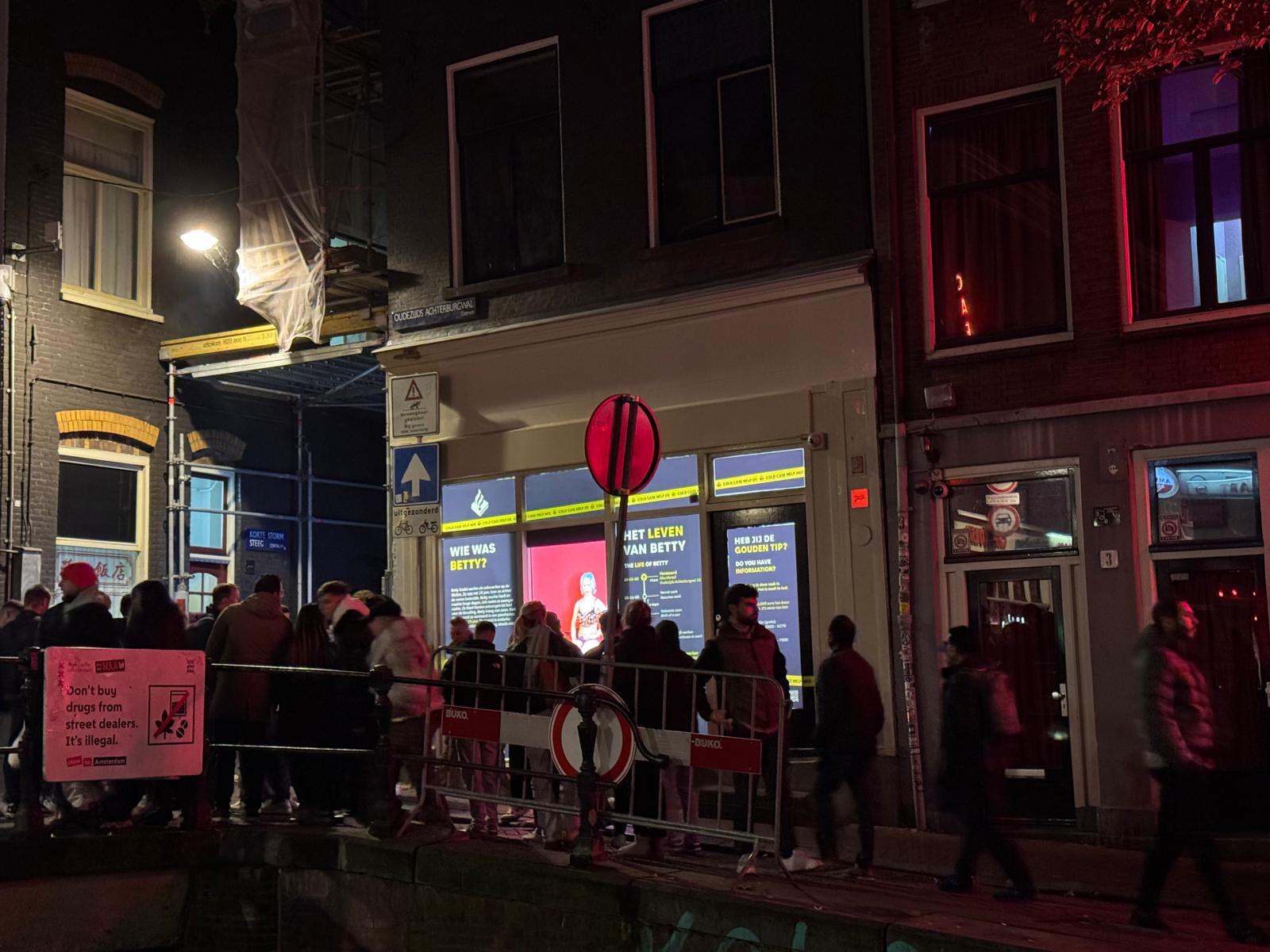Betty Szabó Murder Case: Revolutionary Hologram Technology Seeks Justice
Betty Szabó Murder Case: Revolutionary Hologram Technology Seeks Justice

Table of Contents
In February 2009, a brutal murder in Amsterdam's Red Light District shocked the Netherlands and became one of the country's most infamous cold cases. The victim was Bernadett "Betty" Szabó, a 19-year-old Hungarian sex worker who was stabbed to death in her workplace. Now, 15 years later, Dutch police are using groundbreaking hologram technology in an unprecedented attempt to solve this haunting case.
The Betty Szabó Murder Case: A 15-Year Cold Case

The murder of Betty Szabó represents one of Amsterdam's most challenging unsolved crimes. On February 19, 2009, the young Hungarian woman was discovered brutally stabbed multiple times in her workroom on Oudezijds Achterburgwal, one of the busiest streets in Amsterdam's historic Red Light District. Despite extensive investigations, forensic analysis, and witness interviews, her killer remains at large.
This case has gained renewed international attention due to the Amsterdam Police's innovative use of holographic technology to generate new leads. The approach represents a first-of-its-kind method in criminal investigation, combining cutting-edge visualization technology with traditional detective work.
Betty Szabó's Life and Journey to Amsterdam
Bernadett "Betty" Szabó was born in 1990 in Hungary, specifically in the northeastern city of Nyíregyháza. Growing up in poverty, Betty faced significant hardships from an early age. Dutch police investigations revealed that her life was characterized by "hardship and resilience," painting a picture of a young woman struggling against difficult circumstances.
At just 18 years old, Betty made the life-changing decision to leave Hungary for Amsterdam, seeking better economic opportunities. Like many young women from Eastern Europe, she found work in Amsterdam's legal sex industry, which operates under regulated conditions in the Netherlands.
Shortly after arriving in Amsterdam, Betty became pregnant. Remarkably, she continued working throughout her pregnancy, demonstrating the financial pressures she faced. In November 2008, just three months before her death, she gave birth to a son. Tragically, the child was placed with a foster family, causing Betty considerable grief according to police reports.
The Night of February 19, 2009

On the fateful night of February 19, 2009, Betty was working in her usual room on Oudezijds Achterburgwal. The discovery of her body came about through the concern of fellow sex workers who noticed something was wrong. They realized they hadn't seen Betty and noticed that the music she typically played had stopped.
At approximately 1:00 AM on February 20, 2009, concerned colleagues entered her workroom to check on her welfare. What they discovered was a horrific crime scene: Betty's body lying in a pool of blood, having been stabbed "dozens of times" according to police reports. The brutal nature of the attack suggested extreme violence and possibly personal motivation.
The location of the murder – in one of Amsterdam's busiest tourist areas – made the crime particularly shocking. The Red Light District attracts millions of visitors annually from around the world, meaning potential witnesses could literally be anywhere on the globe.
Initial Police Investigation Efforts
Amsterdam Police launched an immediate and comprehensive investigation into Betty's murder. The initial response included several key investigative approaches:
- CCTV Analysis: Police extensively reviewed security camera footage from the surrounding area, looking for suspicious individuals or activities
- Witness Interviews: Investigators spoke with numerous witnesses, including other sex workers, clients, and tourists in the area
- Forensic Examination: The crime scene underwent thorough forensic analysis, collecting DNA evidence and other physical materials
- International Angle: Police suspected the perpetrator might be a visitor from outside the Netherlands, expanding their investigation scope
Despite these extensive efforts, no concrete suspects were identified, and the case gradually turned cold. The international nature of Amsterdam's Red Light District complicated the investigation, as potential witnesses and suspects could have come from anywhere in the world.
The Revolutionary 2024 Hologram Campaign

In November 2024, Amsterdam Police launched an unprecedented campaign using 3D holographic technology to revive interest in Betty's case. This innovative approach represents the first time law enforcement has used such technology for a cold case investigation.
The lifesize hologram of Betty Szabó sits behind a window in the Red Light District, precisely located at the corner of Korte Stormsteeg and Oudezijds Achterburgwal. The hologram depicts Betty wearing denim hotpants and a leopard-print bra, accurately showing her distinctive dragon tattoo that covered her stomach and chest.
The hologram's behavior is designed to create an emotional connection with viewers. It shows Betty appearing to knock on the window, breathing on the glass, and writing the word "help" in the condensation. This powerful visual metaphor aims to humanize the victim and encourage witnesses to come forward.
Benjamin van Gogh, coordinator of the Amsterdam Wanted and Missing Persons Team, explained the rationale: "Betty's hologram may create a certain connection with her and thus convince a person to come forward. In this type of case, we always try to put a face on a victim, so that informants know who they're doing it for, and the hologram is a way of taking this a step further."
Latest DNA Breakthrough in 2024
In a significant development, the Dutch Forensic Institute (NFI) announced in October 2024 that they had found two DNA matches in connection with Betty's murder case. This breakthrough came just before the launch of the hologram campaign, suggesting that modern forensic techniques are yielding new evidence in this 15-year-old case.
While specific details about these DNA matches have not been publicly released, their discovery represents the most promising lead in the case since the initial investigation. The combination of new forensic evidence and the publicity from the hologram campaign has reinvigorated hopes for solving this cold case.
Impact on Modern Cold Case Investigation

The Betty Szabó case has become a landmark in modern criminal investigation methodology. The use of holographic technology represents a significant evolution in how law enforcement agencies approach cold cases, particularly in high-traffic tourist areas.
Anne Dreijer-Heemskerk of the Amsterdam cold case team emphasized the global implications: "Betty was murdered in one of the busiest areas in Amsterdam, maybe even in the Netherlands. The red light district gets visitors from all over the world." This international dimension makes the hologram campaign particularly valuable, as it can reach potential witnesses regardless of their current location.
The €30,000 reward offered by police demonstrates the serious commitment to solving this case. The combination of advanced technology, financial incentives, and renewed media attention creates multiple avenues for generating new leads.
Frequently Asked Questions About the Betty Szabó Case
When did Betty Szabó's murder occur?
What makes the hologram campaign unique?
What happened to Betty's son?
What is the current reward for information?
Have there been any recent developments?
Share This Important Story
Help spread awareness about Betty Szabó's case. Someone, somewhere, might have crucial information that could finally bring justice to this young woman and closure to her family.